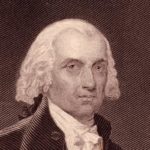In the Constitution, Congress is charged with providing for the general welfare of the country’s
citizens. Historically, this has meant improving transportation, promoting agriculture
and industry, protecting health and the environment and seeking ways to solve social and
economic problems. In 1956, Congress passed the Federal-Aid Highway Act, popularly known as the National Interstate and Defense Highways Act, authorizing federal funding for the extension and
construction of a robust network of interstate highways. This project was one of the largest public
works in U.S. history establishing key transportation infrastructure that impacted lives of all
Americans — changing communities, access and economic possibilities and also providing key
routes for evacuating urban centers — a critical national defense issue in the Cold War era.
Analyzing primary source material, students discuss the origins and reasons for the National
Interstate and Defense Highways Act. Then, they work with historical and contemporary maps
as they consider the impact this important congressionally funded project. While intended for 8th
grade students, the lesson can be adapted for other grade levels.
The Purposes of Government
This lesson has students learn about the purposes of government specified in the preamble of the Constitution. Students will use C-SPAN video clips to define what is meant by “establish Justice, insure domestic Tranquility, provide for the common defense, promote the general Welfare, and secure the Blessings of Liberty.” As practice, students will apply their knowledge of these purposes by viewing real-life examples of government actions and identifying the relevant purpose of government. This lesson works well in classrooms with one-to-one devices and can be adapted to flipped classrooms.
Constitutional Index – Provide for the Common Defense Clause
The Constitutional Index breaks down the U.S. Constitution by Section, Amendment, and Clause and contains broader topics and themes. These are used to cross-reference Library resources in an effort to annotate constitutional history.
Lesson 2: The Federalist Defense of Diversity and “Extending the Sphere”

This lesson involves a detailed analysis of Alexander Hamilton’s and James Madison’s arguments in favor of the extended republic in The Federalist Nos. 9, 10 and 51. Students consider and understand in greater depth the problem of faction in a free republic and the difficulty of establishing a government that has enough power to fulfill its responsibilities, but which will not abuse that power and infringe on liberties of citizens.
Obergefell v. Hodges and consolidated cases (2015)
These cases are about whether states are required to license same-sex marriages or to recognize lawful same-sex marriages performed in other states. In 2013, the Supreme Court ruled that one part of the federal Defense of Marriage Act was unconstitutional under the Fifth Amendment and the federal government had to treat same-sex married couples the same as all other married couples. Does the Fourteenth Amendment require states to do the same? Moreover, does the Fourteenth Amendment require that all states permit marriages between two people of the same sex?
FAQs: Juries
Different Perspectives on the Civil Rights Movement
Anthony Badger uses the career of President Jimmy Carter to frame the questions of change in the American South and the relative impact that economic modernization, nonviolent protest, and armed self-defense had on the end of segregation and the steps taken toward political and social equality. Free registration for students and teachers required to access resource.
Martin Luther King, Jr. and Nonviolent Resistance

By examining King’s famous “Letter from a Birmingham Jail” in defense of nonviolent protest, along with two significant criticisms of his direct action campaign, this lesson will help students assess various alternatives for securing civil rights for black Americans in a self-governing society. (Duration: 3 class periods)
